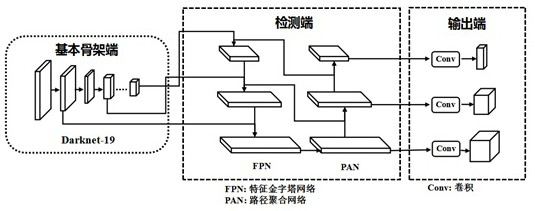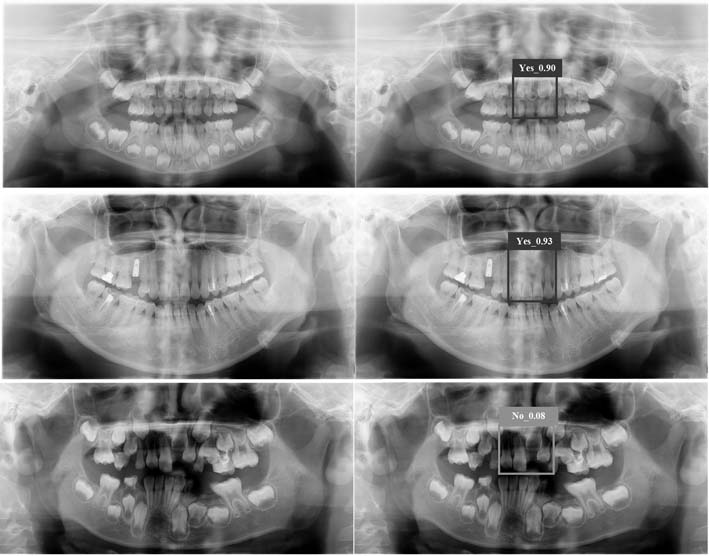Single-step deep network-based automatic detection method for median multiple raw teeth in curved surface body layer graph
A deep network and automatic detection technology, applied in neural learning methods, biological neural network models, image analysis, etc., can solve problems such as errors in clinical diagnosis and data labeling, loss of global information, etc., achieve optimal prediction accuracy and reduce manual errors Effect
- Summary
- Abstract
- Description
- Claims
- Application Information
AI Technical Summary
Problems solved by technology
Method used
Image
Examples
Embodiment 1
[0055] like figure 1 As shown, an automatic detection method for median supernumerary teeth in surface tomography based on single-step deep network, including:
[0056] Acquire new surface layer images;
[0057] Input the new surface body layer image into the single-step deep network model obtained by training, and obtain the positions of multiple candidate bounding boxes and the target confidence that the target category belongs to the median supernumerary tooth;
[0058] The final bounding box was screened from multiple candidate bounding boxes using the non-maximum suppression method to obtain the final positioning of the median supernumerary teeth.
[0059] Further, in this embodiment, a single-step deep network model is obtained by training, including:
[0060] (1) Expand the training set, the training set includes surface tomography images, cone beam CT images, classification and annotation information and positioning annotation information;
[0061] (2) A single-ste...
Embodiment 2
[0094] For a surface layer image to be detected, in practical application, the following steps are specifically included:
[0095] (1) The training set is the surface tomography images, classification annotation information and positioning annotation information of 342 study cases, of which the size of the surface tomography images used for training is 2976×1536 and the pixel size is 0.07×0.07 mm 2 .
[0096] (2) Judging whether there is a median supernumerary tooth from the cone beam CT image corresponding to the curved tomographic image study case, as the classification and labeling information of the corresponding curved tomographic image. The curved tomographic images of the study cases were annotated, and the median supernumerary teeth in the training set of the curved tomographic images were used as the region of interest ROI, which was marked with a bounding box. remember R i for the surface layer image i ROI, extract all the images in the surface tomography R i...
PUM
 Login to View More
Login to View More Abstract
Description
Claims
Application Information
 Login to View More
Login to View More - R&D Engineer
- R&D Manager
- IP Professional
- Industry Leading Data Capabilities
- Powerful AI technology
- Patent DNA Extraction
Browse by: Latest US Patents, China's latest patents, Technical Efficacy Thesaurus, Application Domain, Technology Topic, Popular Technical Reports.
© 2024 PatSnap. All rights reserved.Legal|Privacy policy|Modern Slavery Act Transparency Statement|Sitemap|About US| Contact US: help@patsnap.com










